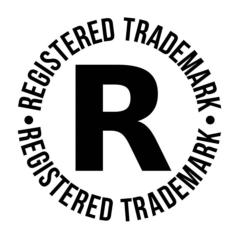3d • The Main Stage
The Dots They Don’t Want You to Connect: Prisons, Bonds, and Wall Street
let’s break this down into plain language with real-world style examples so it doesn’t feel abstract.
🔑 The Bonds (SF-24, SF-25, SF-25A, etc.)
These are federal surety bond forms used in contracting. They’re mirrored in the court/prison system. Here’s what they are in layman’s terms:
- SF-24 — Bid BondNormal use: A contractor bidding on a government project posts this to guarantee they’ll honor their bid if selected.Court analogy (per book): When John Doe is charged/convicted, a “bid” is placed on his case. The Bid Bond is the first instrument that says “someone will take responsibility if this case/contract defaults.”
- SF-25 — Performance BondNormal use: Ensures the contractor actually finishes the job according to the contract.Court analogy: A Performance Bond guarantees John Doe (the “defendant”) will “perform” the sentence (time served, probation, fines, etc.). If he doesn’t, the surety covers the default.
- SF-25A — Payment BondNormal use: Guarantees workers, suppliers, or subcontractors get paid.Court analogy: The Payment Bond is the money side — it secures financial obligations tied to John Doe’s case (court costs, fees, “room & board” in prison).
- Other forms mentioned in the book: SF-1416/1418 → alternative payment/performance bonds. SF-273/274/275 → older versions of bid/performance/payment bonds. SF-28 → affidavit of individual surety (basically says “yes, I’m good for this guarantee”).
🧑⚖️ Example in Plain English
Step 1 — John Doe’s case begins:
John Doe is convicted of a felony. At sentencing, the court enters a judgment. On paper, it looks like punishment — but financially, it’s treated like a contract in default (he “owes a debt to society”).
Step 2 — Bonds created:
Behind the scenes, that judgment spawns a stack of bonds:
- A Bid Bond (SF-24) = “We’ve got a contract on John Doe.”
- A Performance Bond (SF-25) = “We guarantee he’ll serve his time / perform the contract.”
- A Payment Bond (SF-25A) = “We guarantee the money side — costs, incarceration, etc.”
Step 3 — Bonds pooled and sold:
Those bonds don’t just sit in a drawer. They are:
- Pooled together with thousands of others.
- Converted into asset backed securities just like they do with the mortgage-backed securities (MBS). Of which caused the 2008 housing collapse as shown in the movie “the big short”
- These are sold into the bond market via groups like TBA (Bond Market Association).
Step 4 — John Doe becomes an “asset”:
Now, John Doe is not just a prisoner — he’s a line item in a bond portfolio.
- His incarceration = a predictable stream of “performance” on the bond.
- Investors (mutual funds, pensions, insurance companies) buy slices of these bond pools.
- Private prison operators (like CCA/CoreCivic) also issue REIT-style bonds backed by prison real estate, so the financial system profits twice: from the inmate “contract” and the building that holds him.
🛣️ Real-Life Analogy with Roads
Think of it like this:
- When a city wants to build a road, it doesn’t wait for your taxes to pile up. It issues municipal bonds. Investors buy those bonds and get paid back over years via taxes or tolls.
- Similarly, when John Doe is convicted, the system doesn’t just “wait for justice.” It creates bonds, sells them, and raises money upfront. His prison time is now collateralized the same way a toll road is. Remember all money or “dollars” are really just an IOU based on our “full faith and credit of the FUTURE labor of the US Citizens” keyword “FUTURE LABOR” that’s why everything is credit.
All fiat money is futures. Futures backed and based on the credit of your labor!!!!!! Overstand and comprehend this fact.
⚖️ Bottom Line in Layman’s Terms
- John Doe’s conviction isn’t just punishment — it’s paperwork that gets turned into bonds.
- Those bonds are sold in the same Wall Street markets as the bonds that fund roads, schools, or bridges.
- The prison system props up the financial system: inmates = steady cashflows that can be securitized and sold on the global markets.
See the visual diagram below to help you further retain this information:
1
0 comments
powered by

skool.com/title-8-academy-1862
The School You Should’ve Had! Why weren’t we ever taught about credit of finance basics in school? What is money 💰 anyway? Foundational Keys 🔑🧠✨📖
Suggested communities
Powered by
